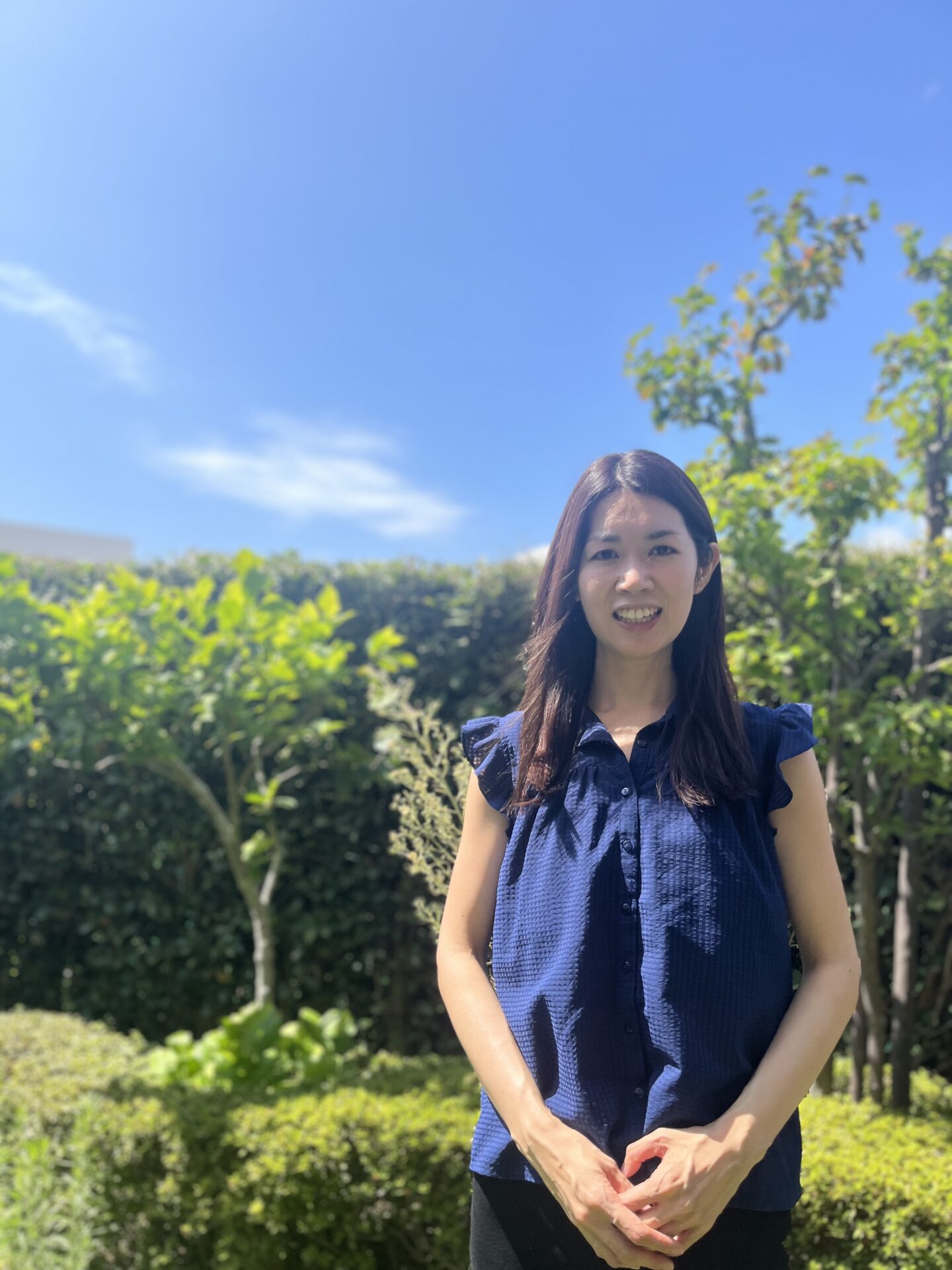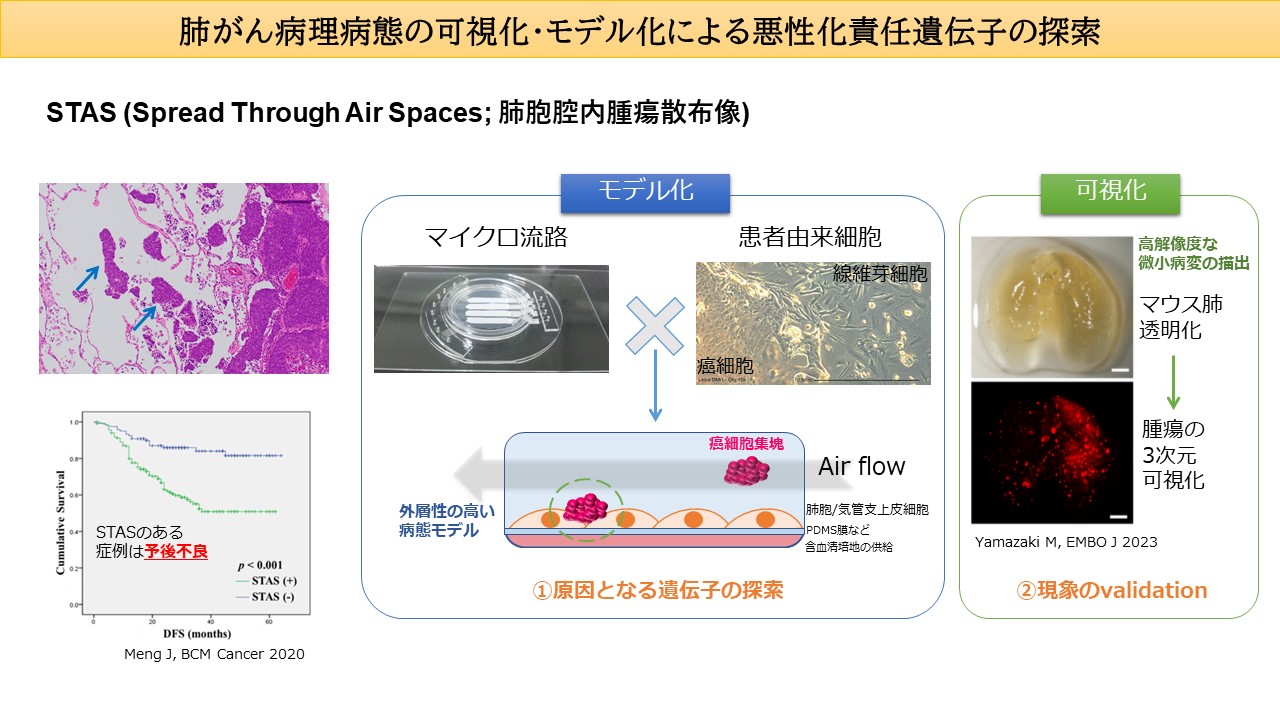第4期フェロー

柴 綾
SHIBA, Aya
筑波大学
医学医療系
准教授
Associate Professor
Institute of Medicine
University of Tsukuba
- 専門分野
Research fields - 分子病理学 トランスレーショナルリサーチ
Molecular pathology, translational research
- 研究テーマ
Research project - 肺癌の病理病態の可視化とモデル化による新たな治療標的遺伝子の探索
Investigation for novel therapeutic target genes through visualization and modeling of pathophysiology of lung cancer
- キーワード
Keywords - 肺癌 患者由来細胞の利活用 病態のモデル化
Lung cancer, patient-derived materials, disease modeling
- 研究者総覧
Researchers Information - https://trios.tsukuba.ac.jp/researcher/0000003424
- researchmap
- https://researchmap.jp/7000024547
経歴
Biography
2013年3月 筑波大学大学院人間総合科学研究科生命システム医学専攻 修了
2013年4月~2019年3月 筑波大学医学医療系 助教
2019年4月~2021年3月 学振海外特別研究員(RRA)
Massachusetts General Hospital Cancer Center, Research fellow
2021年4月~2022年2月 筑波大学附属病院 研究員
2022年3月~ 筑波大学医学医療系 准教授
Apr 2009 - Mar 2013 University of Tsukuba, Graduate school of Comprehensive Human Science
Apr 2013 – Mar 2019 University of Tsukuba, Institute of Medicine, Assistant professor
Apr 2019 – Mar 2021 JSPS Postdoctoral Fellowship for Research Abroad (RRA)
Massachusetts General Hospital Cancer Center, Research fellow
Apr 2021 – Feb 2022 University of Tsukuba Hospital, researcher
Mar 2022 – present University of Tsukuba, Institute of Medicine, Associate professor
研究概要
Research Outline

私は肺癌の病理形態学的特徴に着目して研究をしています。癌細胞が気道を経由して広がる形態は肺胞腔内腫瘍散布像 (Tumor Spread Through Air Space; STAS) と呼ばれ、患者予後と負に相関することが報告されています。そこでSTASを引き起こす原因遺伝子は新たな治療標的になる可能性があると考え、STASのモデル化とSTAS責任遺伝子の探索を行っています。
研究はSTASのモデル化と可視化の2点が軸になっています。第一に肺胞腔を模したマイクロ流路をデザインしSTASのモデル化に取り組み、STAS責任遺伝子の同定を試みます。第二に臓器の透明化と腫瘍の3次元組織染色の技術を利用し、肺の同所移植担癌マウスモデルでSTASの可視化を行い、同定したSTAS責任遺伝子の機能を検証します。最終的にはSTAS責任遺伝子を標的とした薬剤開発に繋げ、肺癌の新たな治療戦略を見出したいと考えています。
My research focus is on the morphological characteristics of lung cancer. The pattern in which cancer cells spread through the airways is known as Tumor Spread Through Air Space (STAS), and it has been reported to be negatively correlated with patient prognosis. I expect that the causes of STAS could serve as new therapeutic targets, so I am working on modeling STAS and exploring the genes responsible for it.
The research consists of two main aspects: the modeling and visualization of STAS. First, I am designing microfluidic devices that mimic alveolar spaces to model STAS, which will lead to identifying STAS-responsible genes. Second, I am utilizing techniques for organ clearing and three-dimensional tissue staining of tumors to visualize STAS in a lung orthotopic transplant cancer mouse model to validate the function of candidate genes. Ultimately, I would like to develop a new therapeutic strategy targeting such STAS-related genes.
私が目指すトランスボーダー研究者とは
What is my goal as a transborder researcher?
社会には国境や研究分野、ジェンダーといったさまざまなボーダーが存在しますが、私たちが無意識に引いている不要なボーダーも多くあるように感じます。私はこれらのボーダーにとらわれることなく、自分の関心や情熱が向かう方向に恐れずに進み、他者とサイエンスの楽しさを共有できる柔軟な研究者になりたいと思っています。
Society is marked by various boundaries—national borders, academic disciplines, and gender divides. However, I believe that many of the borders we create are unnecessary and often drawn unconsciously. I want to be a researcher who isn’t confined by these boundaries, who follows their interests and passions fearlessly, and who shares the excitement of science with others.
関連ページへのリンク
links
https://www.md.tsukuba.ac.jp/diagpatho/home/
https://www.md.tsukuba.ac.jp/diagpatho/home/
